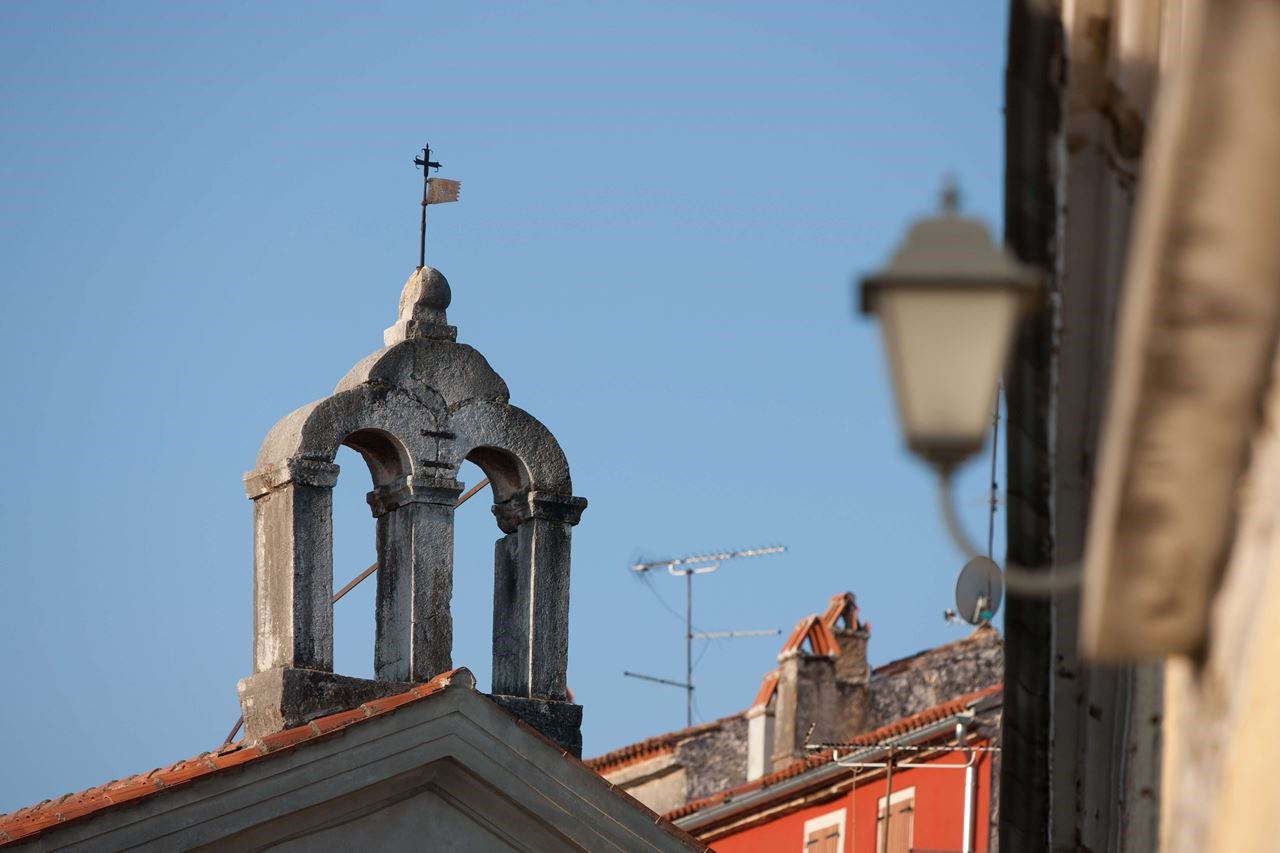

The church was built in the 17th century and thoroughly restored in 1996. It has a simple Renaissance façade with a portal and a round window above it. On the façade, there is a bell-cot with two openings, but without mounted bells (they are displayed in the parish bell tower, but not mounted). The church houses three altar, but the building is used to exhibit sacral art. Saint Fosca is considered to be the co-patron of Vrsar together with Saint Martin. In the church, there is a painting of the Immaculate Conception, depicting Saint Augustine and Saint Peter. Behind the church there is another parish house. The sacral collection of the Parish of Vrsar is also exhibited in the church.
Even though Saint Martin is the titulary of the Church, Saint Fosca is considered to be the co-patron of Vrsar.

The Church of St Fosca is located by the Great Town Gate of Vrsar (the main gate). G. F. Tommasini, Bishop of Novigrad, mentioned it in his work written in mid-17th century. The church is also mentioned in the property records of the parish of Vrsar, and clearly featured in the Franciscan Cadastre of 1820.
The church has a simple Renaissance façade with Baroque style elements. The simplicity of the style is also reflected in the structure of the two windows flanking the door, in the portal, and in the round window above the door. On the façade there is a stone bell-cot with two opening, but without mounted bells. Two bells were once mounted on the bell-cot, one from the 17th, and the other from the 18th century. On the older bell, there is a relief depicting Saint Fosca, the Blessed Virgin Mary and the scene of the Crucifixion, along with the Latin inscription SANCTA FVSCA VRSARIAE MDCLXXX (translation: Saint Fosca of Vrsar, 1680). The other bell dates to the 18th century and bears the Latin inscription OPVS CASTELLIS (translation: work of the Castellises). It was built in a Venetian workshop owned by the Castellis family. That bell was requisitioned in World War I and later replaced by a bell from the Lapagna workshop in Trieste. However, since it was not melted down, it has been preserved to this day. In World War II, the Italians removed the 17th-century bell from the church and that of 1922, but since they were not melted down, they can still be found in the bell tower of Vrsar.

In World War II, the Italians removed the 17th-century bell from the church and that of 1922, but since they were not melted down, they can still be found in the bell tower of Vrsar.
The church is a building with a single nave and prominent rectangular chancel, raised in relation to the nave by one step, and divided from the congregation by a barrier. The floor is paved with stone plates, with tombs of members of the clergy and laity, whose inscriptions are written in Latin. In most cases, those are members of the oldest brotherhoods of Vrsar – of the Most Holy Sacrament and of St Francis. In the chancel there is a tombstone of Luka Prodanić, a parish priest of Vrsar, who died in 169, with priestly symbols in relief – the host and a chalice. The church houses the main altar with the accompanying retable, and two side altars, out of which only altar tables remain, while artworks (paintings) have been put up in place of the retables as a part of the exhibition of the sacral art of the Parish of Vrsar (which is described in a separate chapter dedicated to the Vrsar culture and art). One altar was consecrated to Saint Francis of Assisi, while the other depicted the removal of the body of Jesus from the cross. The sacristy is located in the back of the church. The church was restored in 1910 (when the sacristy was added), in 1915, and finally in 1996. The church once housed the relics of Saint Placide.
Even though Saint Martin is the titulary of the Church, Saint Fosca is considered to be the co-patron of Vrsar. The reasons for that should be sought in the particular circumstances of the church in the middle of the 18th century and at the beginning of the 20th century. The parish church consecrated to St Martin that existed at the time on the communal square (today Degrassi Square), was ruined and abandoned until a new one was built in 1935 – today’s parish Church of St Martin. In the meantime, the Church of St Fosca, the largest sacral building in Vrsar at the time, was used as the parish church, and its titulary came to be regarded as the patron of Vrsar as no church of St Martin existed in the parish. Older locals in Vrsar therefore venerate Saint Fosca in a particular way. Even earlier, during the restoration of the old parish Church of St Martin in the period from 1830 until 1854, the Church of St Fosca was the parish church of Vrsar. Until 1875, it housed a pall depicting Saint George, which could have been brought from the eponymous island church.